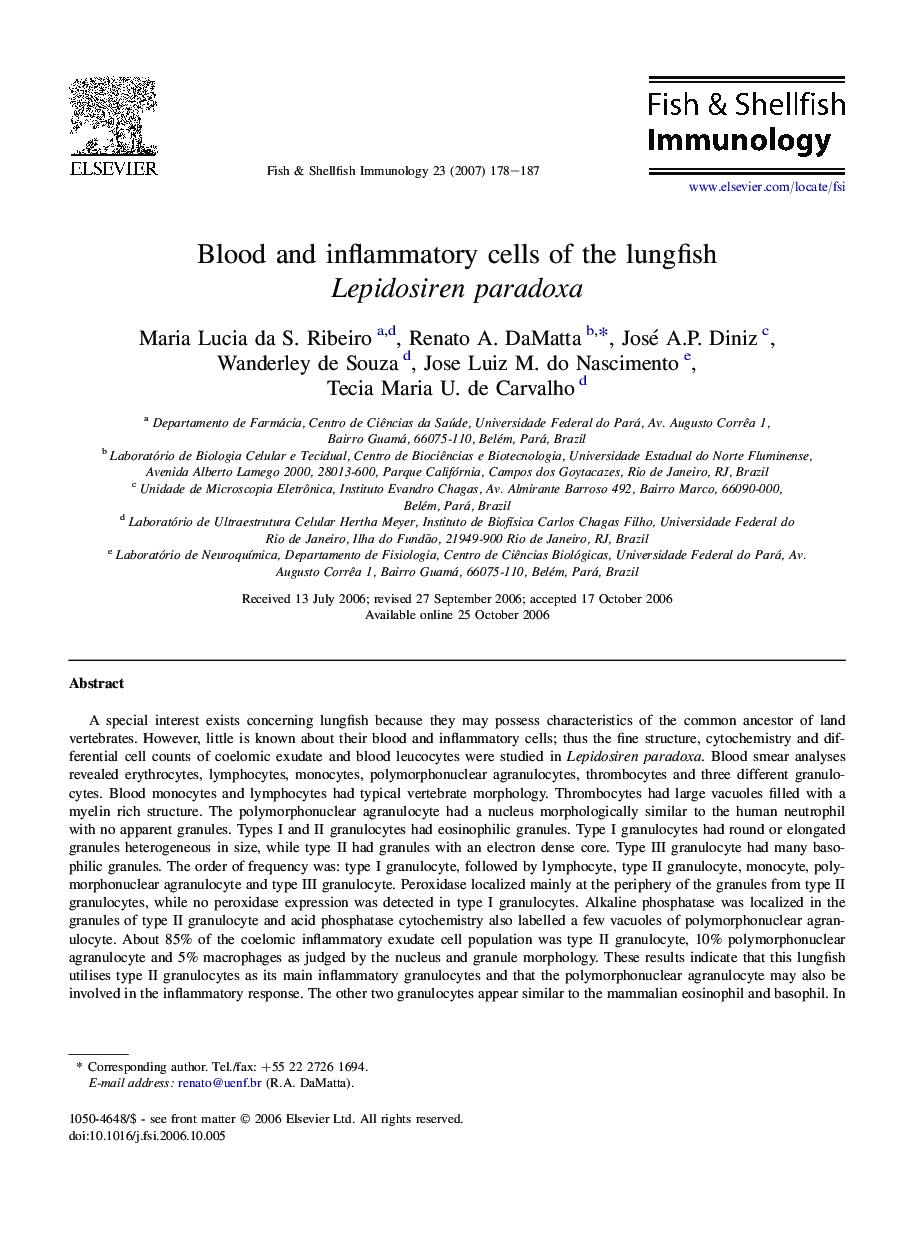| کد مقاله | کد نشریه | سال انتشار | مقاله انگلیسی | نسخه تمام متن |
|---|---|---|---|---|
| 2433638 | 1106842 | 2007 | 10 صفحه PDF | دانلود رایگان |

A special interest exists concerning lungfish because they may possess characteristics of the common ancestor of land vertebrates. However, little is known about their blood and inflammatory cells; thus the fine structure, cytochemistry and differential cell counts of coelomic exudate and blood leucocytes were studied in Lepidosiren paradoxa. Blood smear analyses revealed erythrocytes, lymphocytes, monocytes, polymorphonuclear agranulocytes, thrombocytes and three different granulocytes. Blood monocytes and lymphocytes had typical vertebrate morphology. Thrombocytes had large vacuoles filled with a myelin rich structure. The polymorphonuclear agranulocyte had a nucleus morphologically similar to the human neutrophil with no apparent granules. Types I and II granulocytes had eosinophilic granules. Type I granulocytes had round or elongated granules heterogeneous in size, while type II had granules with an electron dense core. Type III granulocyte had many basophilic granules. The order of frequency was: type I granulocyte, followed by lymphocyte, type II granulocyte, monocyte, polymorphonuclear agranulocyte and type III granulocyte. Peroxidase localized mainly at the periphery of the granules from type II granulocytes, while no peroxidase expression was detected in type I granulocytes. Alkaline phosphatase was localized in the granules of type II granulocyte and acid phosphatase cytochemistry also labelled a few vacuoles of polymorphonuclear agranulocyte. About 85% of the coelomic inflammatory exudate cell population was type II granulocyte, 10% polymorphonuclear agranulocyte and 5% macrophages as judged by the nucleus and granule morphology. These results indicate that this lungfish utilises type II granulocytes as its main inflammatory granulocytes and that the polymorphonuclear agranulocyte may also be involved in the inflammatory response. The other two granulocytes appear similar to the mammalian eosinophil and basophil. In summary, this lungfish appears to possess the typical inflammatory granulocytes of teleosts, however, further functional studies are necessary to better understand the polymorphonuclear agranulocyte.
Journal: Fish & Shellfish Immunology - Volume 23, Issue 1, July 2007, Pages 178–187